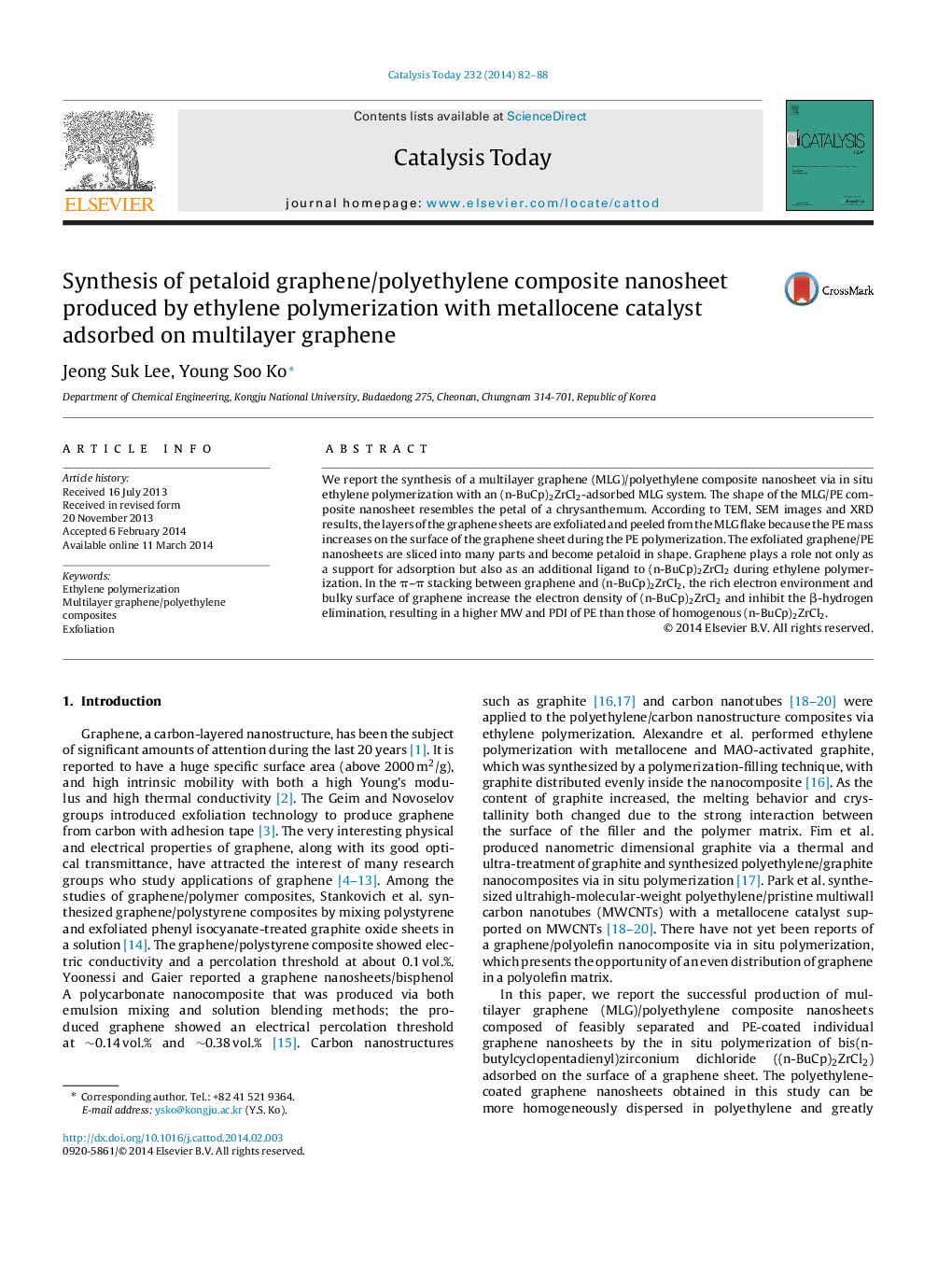| Article ID | Journal | Published Year | Pages | File Type |
|---|---|---|---|---|
| 54459 | Catalysis Today | 2014 | 7 Pages |
•We synthesized a multilayer graphene (MLG)/PE composite via ethylene polymerization.•An (n-BuCp)2ZrCl2-adsorbed MLG system was prepared for the PE polymerization.•The shape of MLG/PE composite nanosheet resembles the petal of a chrysanthemum.•The graphene sheets are exfoliated from the MLG flake during polymerization.•PE had a higher MW and PDI of PE than those of homogenous (n-BuCp)2ZrCl2.
We report the synthesis of a multilayer graphene (MLG)/polyethylene composite nanosheet via in situ ethylene polymerization with an (n-BuCp)2ZrCl2-adsorbed MLG system. The shape of the MLG/PE composite nanosheet resembles the petal of a chrysanthemum. According to TEM, SEM images and XRD results, the layers of the graphene sheets are exfoliated and peeled from the MLG flake because the PE mass increases on the surface of the graphene sheet during the PE polymerization. The exfoliated graphene/PE nanosheets are sliced into many parts and become petaloid in shape. Graphene plays a role not only as a support for adsorption but also as an additional ligand to (n-BuCp)2ZrCl2 during ethylene polymerization. In the π–π stacking between graphene and (n-BuCp)2ZrCl2, the rich electron environment and bulky surface of graphene increase the electron density of (n-BuCp)2ZrCl2 and inhibit the β-hydrogen elimination, resulting in a higher MW and PDI of PE than those of homogenous (n-BuCp)2ZrCl2.
Graphical abstractFigure optionsDownload full-size imageDownload high-quality image (153 K)Download as PowerPoint slide
